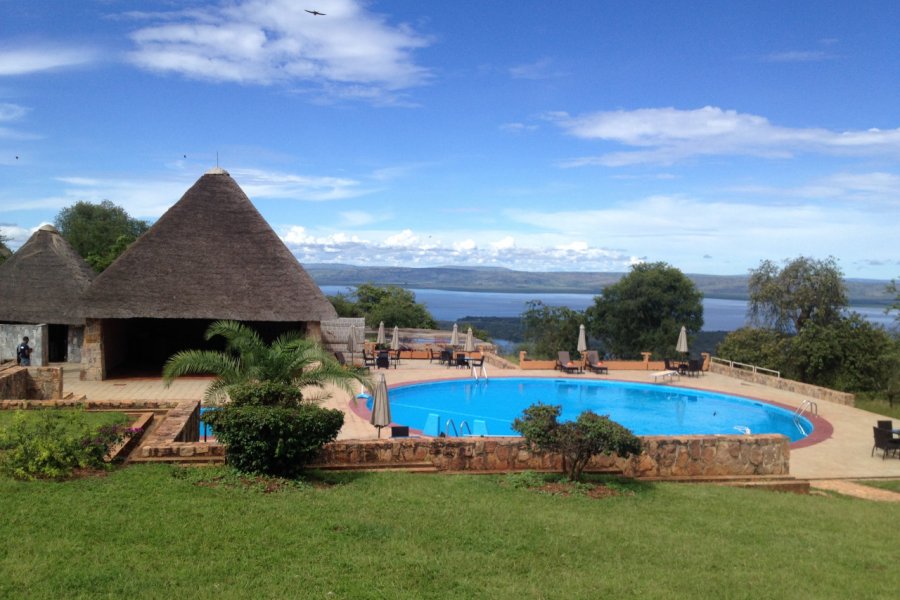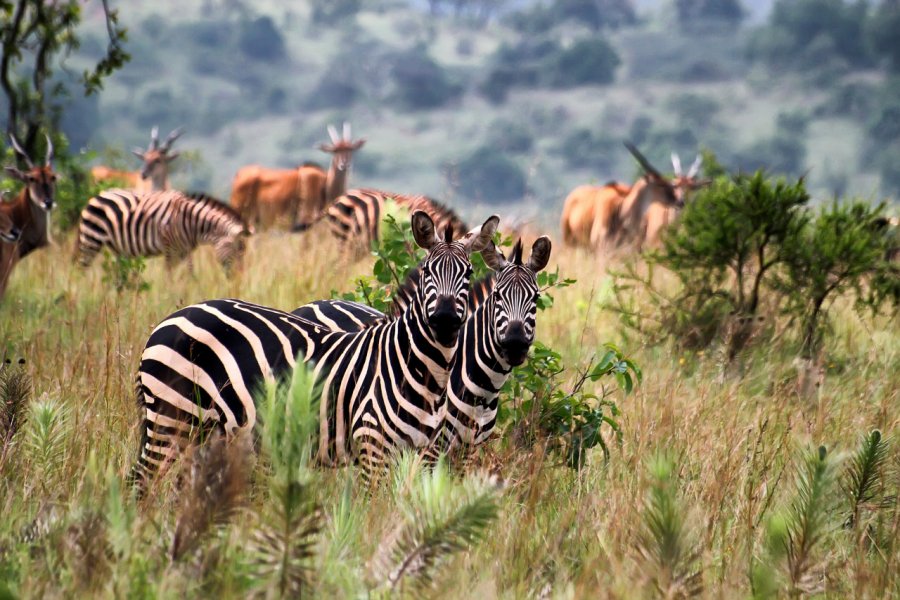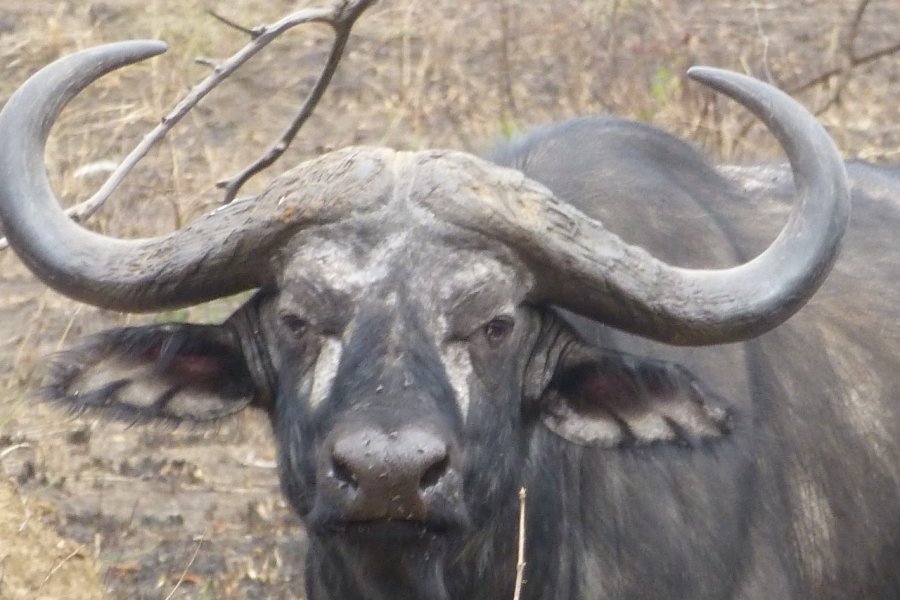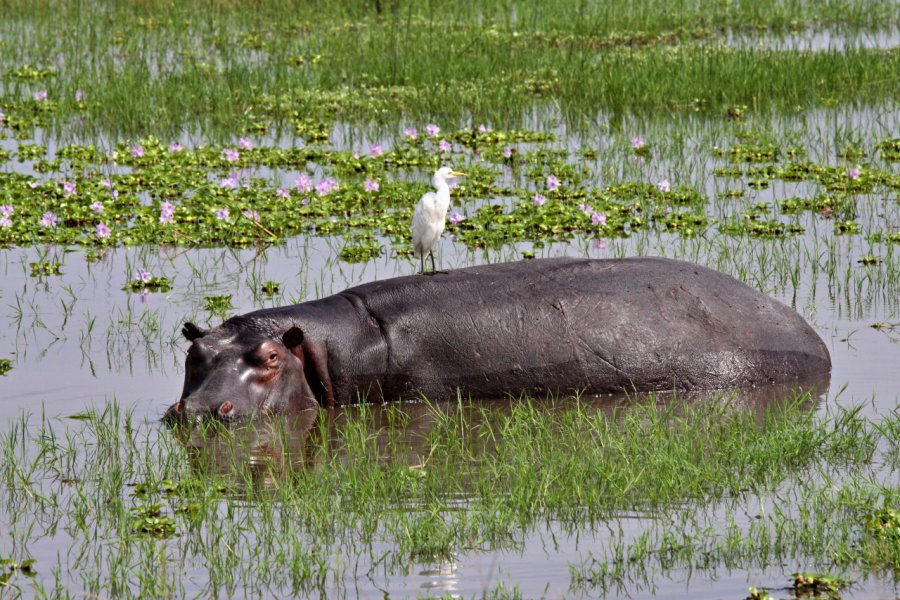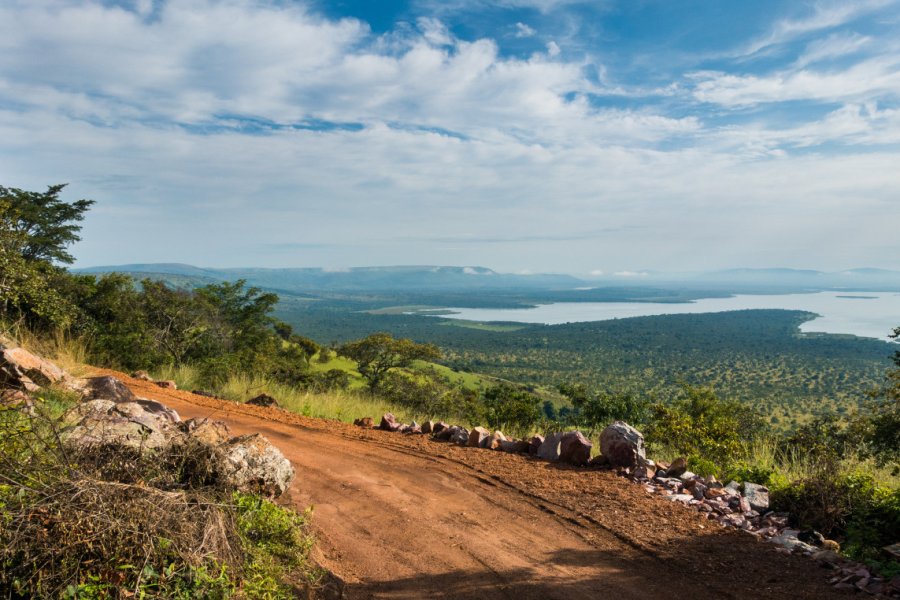Travel Guide Parc National De L’akagera
Find an accommodation
Advertising
The park can only be entered through the southern entrance, but it is always possible to leave through the northern entrance, so that both sides can be discovered: the northern part is less hilly and has less dense vegetation, while the southern part has more relief and vegetation. The park was created in 1934 and is located between 1300 and 1825 meters. After the genocide, more than half of the park was amputated, which used to be the hunting area and its annexes. It is now surrounded by the so-called "economic development" zone, reserved for livestock, beekeeping and crafts. It remains a very beautiful wild reserve of 1,120 km2 composed of happy savannahs and wooded massifs, swamps and lakes, in short an ideal place to meet the animals, more present in the north: lions, elephants, rhinoceroses, antelopes, zebras, giraffes, hippos, buffalos, Cape elands, topis, impalas, warthogs, Nile lizards... We see them up close, and it's really worth it. The giraffes were about sixty when they were introduced in 1986, before being decimated during the war, but we count again about a hundred. They are often near the entrance of the park, chewing acacia. Before the reintroduction of lions, the only large predators in the park were leopards and spotted hyenas. After the fence was installed, seven lions (five females and two males) were introduced in 2015 from South Africa after being absent from the park since 1999. Two additional males were transferred to the park, in 2017, to allow for greater genetic diversity. The lion population has since quadrupled Elephants? There are about 100 of them (133 to be exact, in 2021). Among them, the famous Mutware, 41 years old, terrorized tourists in 2005, until, according to the rumor, he ran over the car of the French consul! He did it again in 2011, pushing the vehicle of Belgian tourists into the lake, fortunately without the occupants, but with all their stuff. Why so much rage? The shooting he was victim of in 1994 and the difficulty to find a female, given his damaged tusks, would have turned him into an aggressive loner, but only during the mating season... The old pachyderm, to which the park's regulars were very attached, died out in September 2018.Finally, the park is now home to the last of the "Big Five": the eastern black rhino (10 females, 8 males), reintroduced in 2017. The first cubs were born in 2018. Five new individuals were transferred from European zoos in 2019, in order to boost genetic diversity here again. To these are added 30 southern white rhinos transferred in 2021 to Akagera from the private reserve of Phinda (South Africa).The avifauna includes more than 480 species of birds, both resident and migratory, such as the metallic blackbird, the nasal hornbill, the Senegalese lapwing, the pelican, the stork, the heron or the fish eagle, but also rare species such as the Nile shoebill or the papyrus gonolek The lakes are full of fish, and the lake of Chacany hosts every year (hence its name) a great fishing contest. At the edge of the lake there is also a former house of the ex-president Habyarimana, now occupied by guides. The reserve is also worthwhile for the exceptional quality of its silence. To pass by Akagera is also to recharge your batteries and to offer yourself a delicious moment of communion with nature.
What to visit Parc National De L’akagera?
Suggested addresses Parc National De L’akagera
Weather at the moment
Advertising
Organize your trip with our partners Parc National De L’akagera
Transportation
Book your plane tickets
Car Rental
Boat rental
Accommodation & stays
Find a hotel
Holiday rental
Find your campsite
Tailor-made trip
Immersion travel
Services / On site
Activities & visits
Find a doctor
